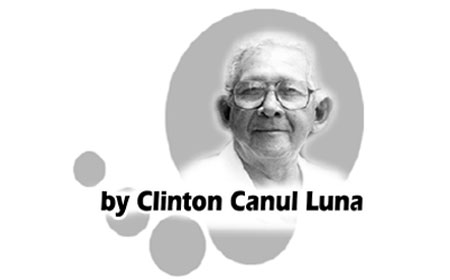While USAID eventually tabled Urapalma’s proposal, the agency awarded one grant to Coproagrosur, the company surrendered by Macaco, and another to Gradesa, which refines palm oil for domestic consumption and export—much of it to the United States. According to ARD reports and USAID documents, the agency’s grant to Gradesa helped support a project in Belén de Bajirá, Chocó, the Urabá municipality that is home to Urapalma—and to the land formerly farmed by Enrique Petro. USAID appears to have supported Gradesa’s involvement in refining palm oil from the Chocó killing fields. USAID insists it has never funded a palm project in Chocó. Representatives from USAID, Gradesa and ARD deny that the Gradesa project was based in Belén de Bajirá, despite three years of references to the town in internal and public documents.
USAID representatives say that the locale was referenced erroneously after Gradesa mistakenly mentioned it in a status report. “The error went unnoticed,” USAID’s press attaché explained by e-mail, “because our main interest centers on information related to hectares, families, employment and budget invested.” In any case, at the time USAID awarded Gradesa a $257,000 grant on December 19, 2003, corporate filings show that the same two Zúñiga brothers who’d invested in Urapalma, Antonio and Carlos, also sat on Gradesa’s board. (Carlos appears on a Colombian government list of narcotraffickers as early as 1987.) In March 2005, Colombia’s attorney general announced that he was seizing the Zúñigas’ stake in the firm and filed criminal charges against the brothers for using Gradesa to launder narco-dollars. According to a Colombian narcotics official, that stake was 50 percent; a recent interview with Gradesa’s CEO revealed that the brothers had owned this stake since the early 1990s, long before the USAID grant.
The attorney general’s case is now plodding its way through Colombian courts, the government’s fifth attempt to pin drug-laundering charges on the Zúñigas. Despite this pending legal action, USAID approved a second Gradesa grant in 2007, this one for $400,000—monies from a new five-year, $182 million contract with ARD. In a written response, a US embassy official said that since USAID received no formal notice of the case against the Zúñigas, “there was no way that USAID could have been aware of the link between Gradesa and the Zúñiga investigation.” The official said “no red flags were raised” in the due diligence process for Gradesa’s second grant and that as the Zúñigas were no longer “shareholders, investors or managers” they did not qualify as “recipients.”
Permanent Displacement
Life has not improved much for Petro or his fellow refugees. In April the government returned 3,200 acres—just 6 percent of the stolen land—to some farmers along the Curvaradó River. Twelve years after they were forced to flee, the rest remain displaced. The government says it is pressing the palm companies to return the remainder of the lands voluntarily, but locals have heard such promises before. Meanwhile, the companies are shipping out palm kernels by the truckload. Petro has only a fraction of his farm left, part of which he turned into a makeshift “humanitarian zone,” a village of wooden shacks called Caño Claro, populated in recent years by as many as a dozen displaced families at a time. More than 2,500 people still scrape by in a handful of these humanitarian zones, which dot the Curvaradó and Jiguamiandó river basins, though none enjoy legal recognition by the government. In some cases, all that separates these refugees from their palm-covered former farms is a cratered dirt road patrolled by paramilitaries, now in civilian clothing, and army soldiers.
Children scamper around the camps with bloated bellies from illness and malnutrition, their families torn from their source of subsistence. Of late, reprisals and violent threats toward those demanding the return of their lands have increased. One day last October campesino leader Walberto Hoyos was shot and killed execution-style near the Curvaradó River, his neck and face pumped with bullets by a paramilitary gunman. The next morning, the residents of Urabá woke up to find their towns riddled with fresh graffiti and leaflets announcing the formation of a new paramilitary group, an eerie reprise of events leading up to la violencia.
[email protected]
April 1, 2016
Finca Solana
Corozal Town

